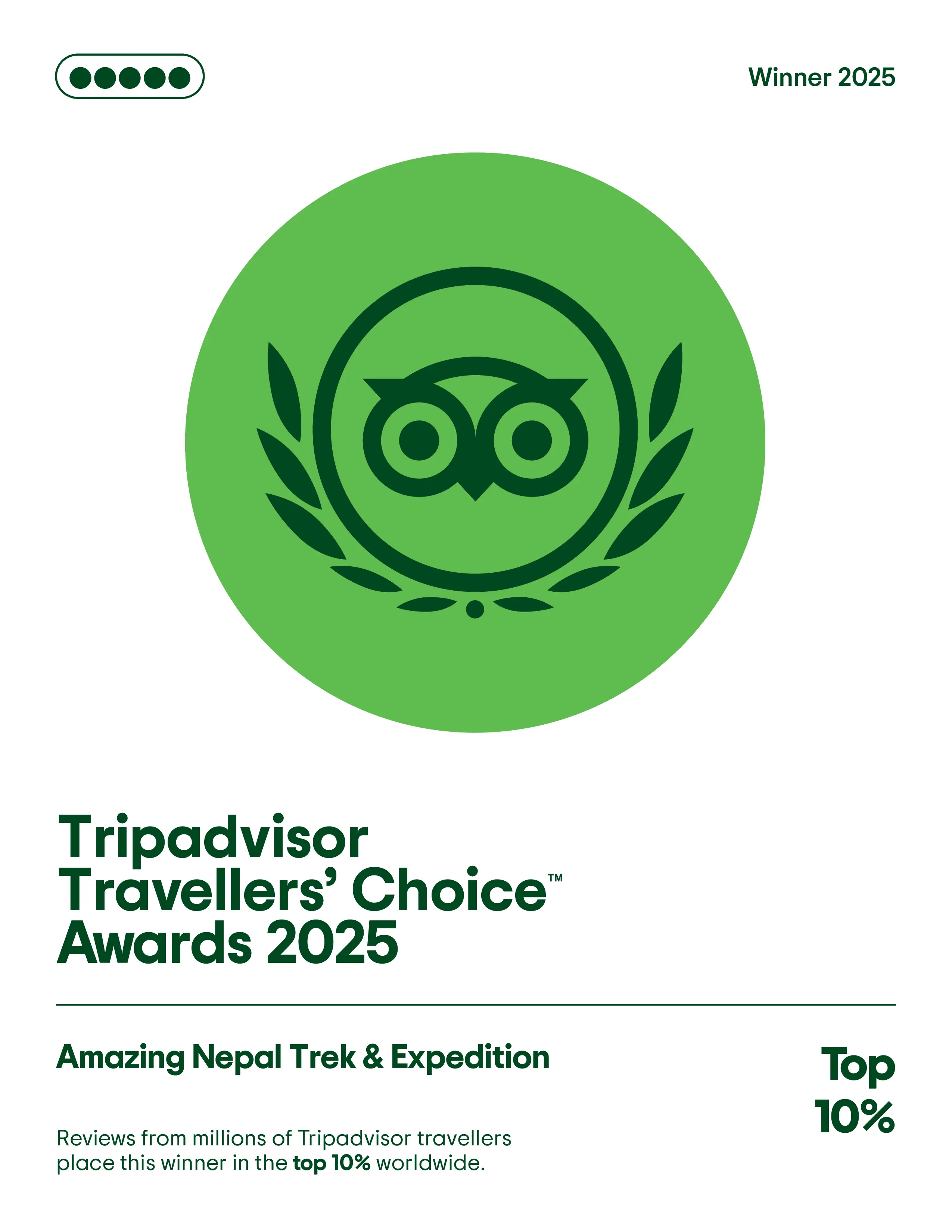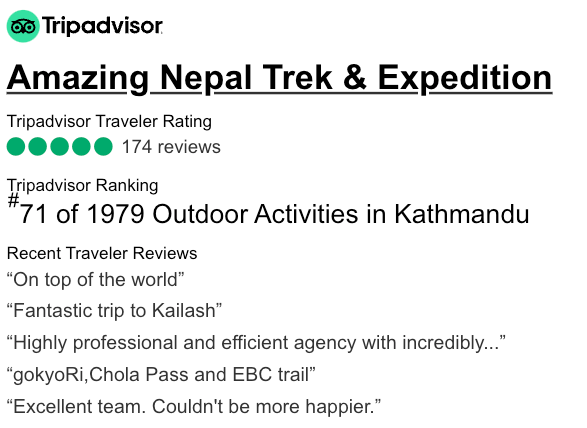Trekking in Nepal is one of the thrilling experiences of Asian Continent having eight out of the top ten tallest mountains including Everest in the world. The most beautiful landscapes which are only reachable by foot is available in this country.
Trekking is most popular adventure sport in Nepal, and travelers will be huddled on the streets of Kathmandu and Pokhara almost all around the year. The wide variety of options allows for travelers of different ages and capabilities to attempt a trek in Nepal. While you could spend a year planning your trip to wild and lofty trails that few would dare attempt, you could also let us plan your trip, buy the flight tickets and land in Kathmandu, the rest leave on Amazing Nepal Trek & Expedition.
Best Time To Go
Spring (March-June) and Autumn(September-November) are the best seasons for trekking in Nepal as they stay dry and warm. During these seasons, the temperature is bearable and sky usually gets clear. It is also possible to trek during the offseason, but the rain and leeches are expectable during the monsoon season, and freezing cold and closed passes during the winter season.
During the monsoon season, the trails are found empty of trekkers. Usually, rain comes at night; days remain cloudy with less rain. The north side of the Himalayas is in rain shadow, means that the mountains block the clouds with moisture, caused no rain or very less. Manang and Mustang are known as rain shadow areas. Read more: https://www.amazingnepaltrek.com/blog/best-seasons-for-trekking-in-nepal
Experience & Fitness
There are a wide variety of trekking routes suitable for those trekkers who have a different trekking experience and physical fitness. If you are able to hike uphill and downhill for a few hours every day, then you can find a perfect trek in Nepal. An easy trek with Nepalese crew and teahouse accommodation is affordable for anyone who is reasonably fit. High altitude treks and into remote regions need more preparation and physical fitness. For quick climbing Peaks, such as summiting a mountain of 5650-6500m, it is beneficial to have some alpine climbing experience.
Equipment and Accessories
It is always smart to take only what is required for the trek and leave the rest behind in the major cities. Your needs on the trek will be very simple.
It is possible to purchase or rent everything you need for the trek in Thamel, Kathmandu and in Lakeside, Pokhara, and the goods sold in Nepal are fairly good quality but, sometimes you might have to hard bargain for the fair price.
Below is the checklist of equipment that is required for the trek:
HEAD
Buff headwear /neckwear
Sun hat or scarf
Light balaclava or warm fleece hat
Sunglasses
Head Torch
UPPER BODY
Cotton T-shirts or Thermals
Fleece jacket
Waterproof/windproof jacket
Down filled jacket (Your own Down Jacket is strongly recommended, but Amazing Nepal Trek also supply complimentary down jacket which is needed to be returned after the completion of trek)
LOWER BODY
Lightweight cotton pants (long)
Waterproof Pants
Thermal underwear
FEET
Thin inner socks
Thick and warm wool hiking socks
Comfortable Hiking boots
Sneakers /slippers
HANDS
Gore-tex gloves
ACCESSORIES
Sleeping bag rated to - 20°C (Your own sleeping bag strongly is recommended, but Amazing Nepal Trek also supply complimentary sleeping bags which is needed to be returned after the completion of trek)
Trekking bags/duffel bag (Amazing Nepal Trek will supply complimentary water and windproof duffel/kit bag, but one extra big duffel bag/suitcase is necessary for items that are left at the hotel in Kathmandu)
Large plastic bags (For keeping items dry inside trek bag)
Trekking poles (Optional, Recommended)
Water bottle or camel bag
Toiletries
Towel
Sewing Kit
Insect repellent, sunscreen, and lip balm
The first-aid kit; should contain lip salve, Aspirin, Band Aids, anti-histamine, Imodium or similar tablets for mild cases of diarrhea
Re-hydration powder, extra prescription drugs you may be taking if any particular
Wet wipes
Reading or writing material
Required Permits
Trekking and climbing permits are mandatory as numerous checkpoints are unavoidable, and park officers and security authorized can check your permits at any time. If you try to enter in the National parks or Conservation Areas without proper permits, and if you are caught, you will be charged a fine of double the normal cost or sent you back from the checkpoints. Never try to bribe officers or security personnel; it will push you in more trouble than you think. Usually, there will be two permits, one will belong to the conservation area or national park, another will be Trekkers Information Management System (TIMS) Card, But if you want to trek in the restricted areas then you need one more, which will be issued from Nepal Immigration. Read more: https://www.amazingnepaltrek.com/blog/trekking-permits-and-national-park-entry-fees-in-nepal








